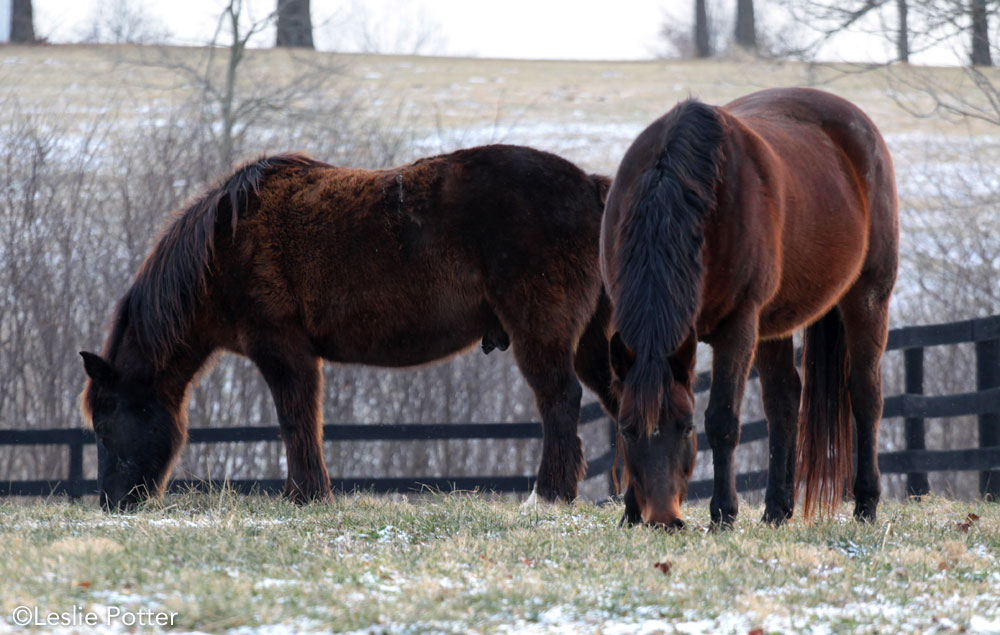
Fall days—a chill in the air, geese flying south, pumpkins…and fuzzy horses. Autumn is a time when many horses are putting on their winter coats in earnest, but what causes it? Is it the change in temperature? Is it the shorter days?
First of all, your horse’s winter coat growth response is not really caused by cold temperatures—if it were, horses wouldn’t begin to grow coats until cold weather actually hit, and then it would be too late. Instead, as horse owners know, horses actually begin to grow their winter coats as early as September, or even August in northern climates.
The real trigger for winter coat growth is diminishing light. As the fall days get shorter, the reduction of light causes the horse’s body to begin increasing the production of the hormone melatonin, which in turn prompts additional coat growth. In the spring, when daylight increases again, melatonin production drops, and the coat sheds out.
But wait—isn’t it true that horses in southern regions generally put on less of a coat than horses in a northern environment? This would tend to make it seem that temperature is playing a part, but again, it’s more about light. Southern regions (closer to the equator) are more regular in their seasonal length-of-day, and experience less of a “swing” in daylight/nighttime hours than northern regions, and thus the horses produce smaller amounts of melatonin.
Horses in the north with shorter days produce more melatonin. The result of this is that most horses naturally grow a coat that is suitable for their climate.
That said, all horses are different, and some just tend to put on heavier coats than others. And of course, winter coat thickness can vary greatly from breed to breed. One way that some horse owners try to control coat growth is to adjust artificial lighting in the barn. It’s fairly common for people to leave the stable lights on more in the spring to try to get their show horses to shed out more quickly. In theory you could also leave the barn lights off in the fall to try to get your horse to put on a coat as fast as possible.
When cold weather does strike, you’ll probably notice your horse’s coat “standing up,” and making him look fuzzier, softer, and “woolier” than normal. This is because the individual hairs in your horse’s winter coat actually spring up in cold weather, creating air pockets that provide extra insulation and therefore keep your horse’s natural body heat from escaping. This is the same way that putting on a winter jacket works for you—the jacket itself doesn’t actually provide any heat, it simply keeps your own body heat contained.
Don’t make the mistake of blanketing your horse when he really doesn’t need to be. It’s not uncommon for a well-meaning horse owner to “want to make him more comfortable” and provide a blanket. The problem that can occur is that a blanket may press down those coat hairs that were standing up, and, without this natural insulation, blanketing may actually make the horse colder. Of course there are situations when blanketing is warranted, such as clipped horses, horses that were just exercised, senior horses, or horses that don’t put on an adequate coat for the environment, etc… Blanketing should be considered on a case-by-case basis.
Has your horse started putting on his “winter woolies?”

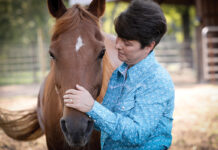
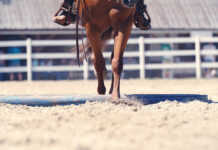
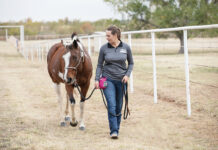
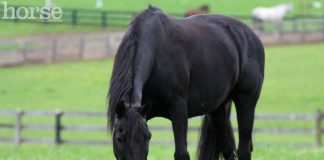

[…] you’d like to learn more, check out this article from Horse Illustrated Magazine and also one from […]